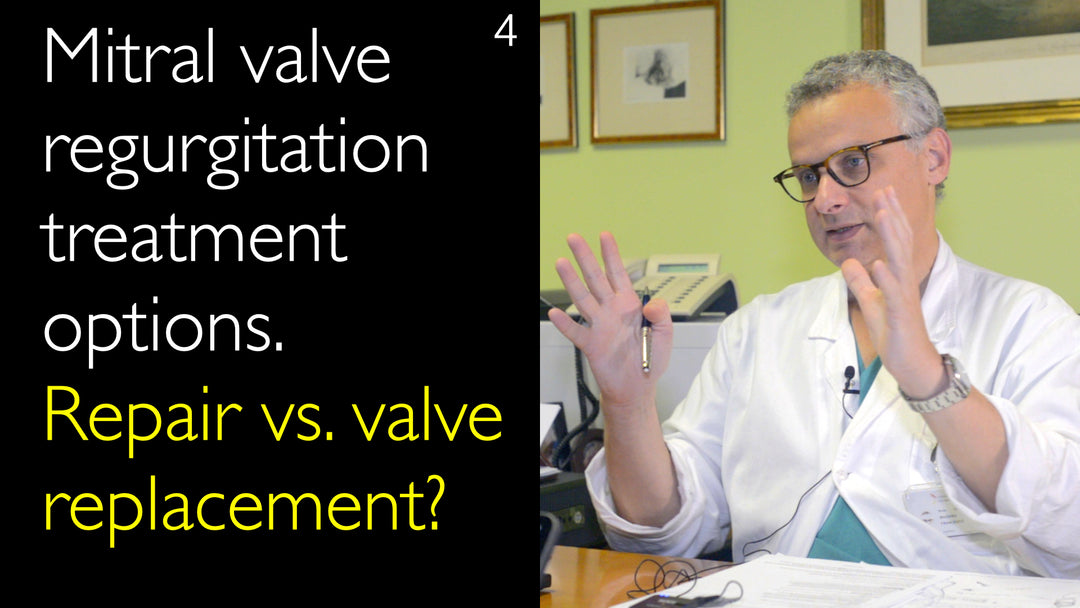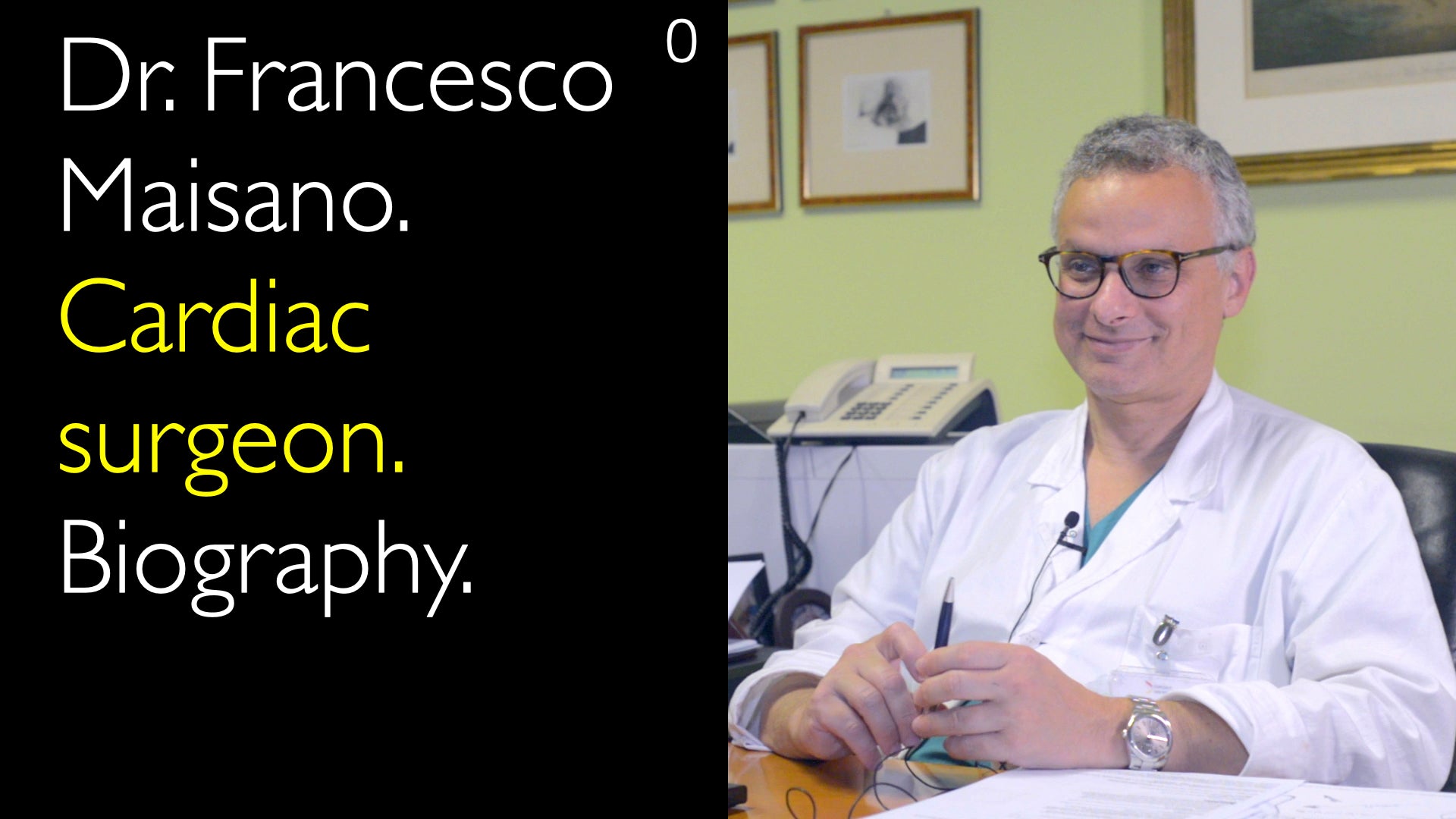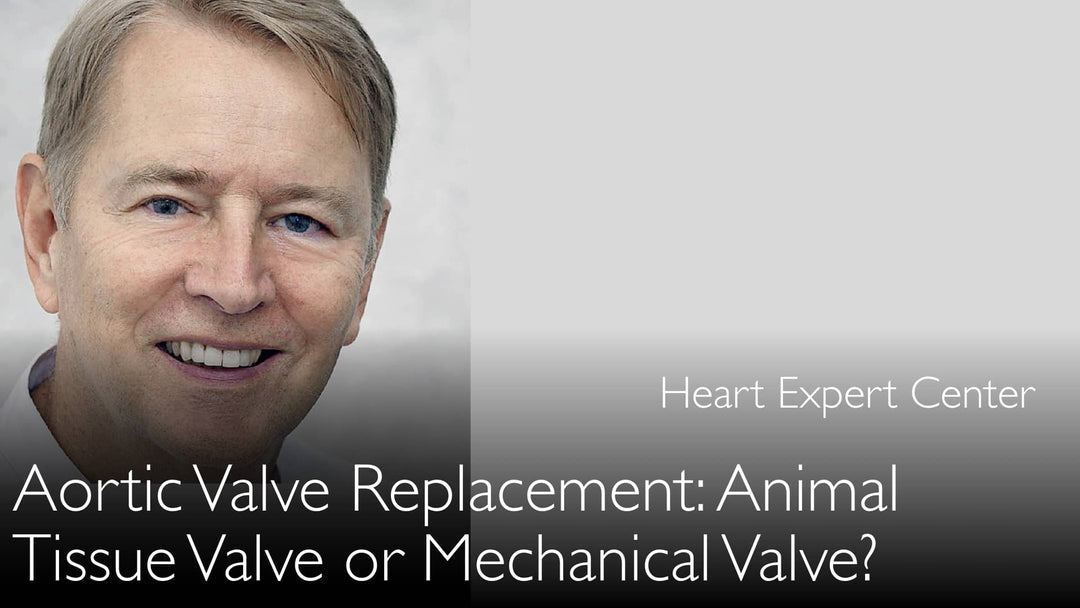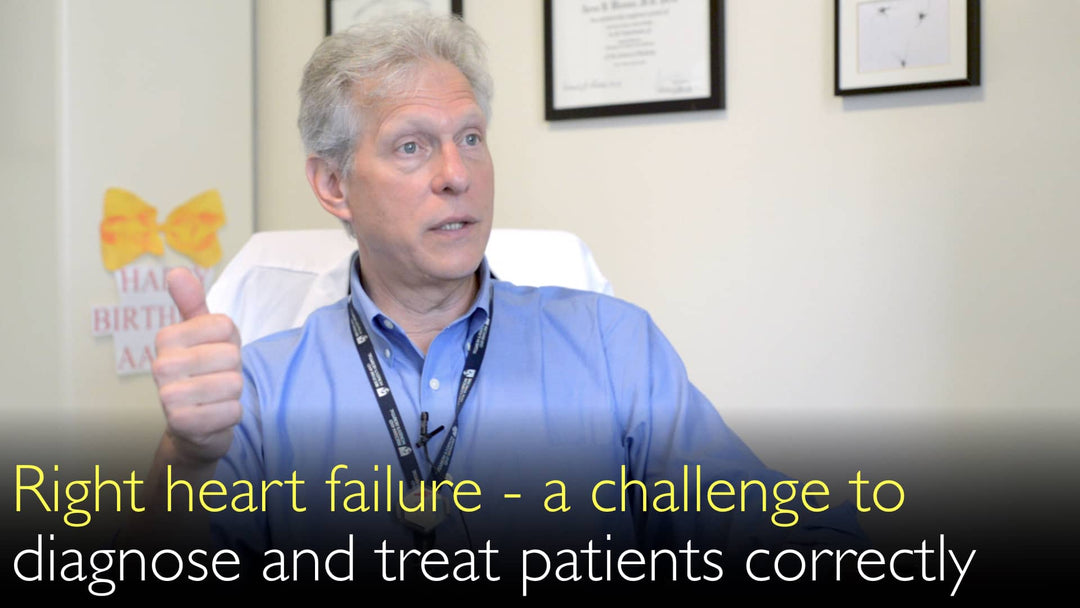O Dr. Francesco Maisano, MD, discute os objetivos do tratamento, que visam eliminar a regurgitação e a estenose sem deixar lesões residuais. Ele prevê uma mudança significativa em direção a opções menos invasivas para todas as categorias de risco de pacientes nos próximos anos.
Tratamento da Insuficiência Mitral: Reparo Cirúrgico versus Opções Transcateter
Navegar para a Seção
- Insuficiência Mitral Primária versus Funcional
- Tratamento Cirúrgico para IM Degenerativa
- Reparo Transcateter Borda-a-Borda
- Diretrizes de Tratamento para IM Funcional
- Futuros Tratamentos para Valva Tricúspide
- Debate: Reparo versus Substituição Valvar
- Transcrição Completa
Insuficiência Mitral Primária versus Funcional
O tratamento da insuficiência mitral exige a compreensão de duas categorias distintas da doença, com estratégias completamente diferentes. O Dr. Francesco Maisano, MD, ressalta que a insuficiência mitral primária é causada principalmente por prolapso valvar mitral de origem genética. Isso abrange um espectro que vai desde a deficiência fibroelástica, com ruptura de uma única cordoalha tendínea, até o tecido excessivamente alterado e redundante da doença de Barlow.
Já a insuficiência mitral funcional, em contraste, ocorre secundariamente a outras condições cardíacas, como insuficiência cardíaca, em que o aparato valvar é estruturalmente normal, mas apresenta disfunção. O Dr. Anton Titov, MD, e o Dr. Maisano discutem como essa diferença etiológica fundamental determina vias de tratamento e processos decisórios totalmente distintos para cardiologistas e cirurgiões.
Tratamento Cirúrgico para IM Degenerativa
A cirurgia cardíaca aberta permanece como padrão-ouro no tratamento da insuficiência mitral degenerativa em pacientes mais jovens e sem comorbidades. O Dr. Francesco Maisano, MD, explica que a doença de Barlow geralmente afeta pacientes entre 40 e 55 anos e exige múltiplas manobras cirúrgicas além da simples anuloplastia. Esses reparos complexos agora podem ser realizados por meio de abordagens videoscópicas minimamente invasivas com incisões periareolares.
De acordo com o Dr. Maisano, a cirurgia robótica da valva mitral oferece vantagens principalmente no ensino cirúrgico, e não nos desfechos dos pacientes. A tecnologia permite que estagiários acompanhem melhor procedimentos complexos, mas traz benefícios limitados em comparação com técnicas minimamente invasivas convencionais para cirurgiões experientes que utilizam instrumentos longos. Essa expertise garante que os pacientes atinjam os objetivos do tratamento: sem regurgitação, sem estenose e sem lesões anatômicas residuais.
Reparo Transcateter Borda-a-Borda
O reparo transcateter borda-a-borda da valva mitral revolucionou o tratamento de pacientes idosos com insuficiência mitral degenerativa e comorbidades. O Dr. Francesco Maisano, MD, descreve tecnologias como o MitraClip e o Pascal, que permitem o reparo por cateter sem cirurgia aberta. Embora não seja a técnica mais simples, esses procedimentos podem proporcionar excelentes resultados em mãos experientes para pacientes com contraindicações relativas à cirurgia.
O Dr. Anton Titov, MD, explora com o Dr. Maisano como essas alternativas endovasculares estão ampliando as possibilidades de tratamento. Estudos clínicos em andamento investigam abordagens transcateter mesmo em pacientes de baixo risco, sugerindo um futuro em que mais casos de insuficiência mitral degenerativa possam ser tratados sem cirurgia tradicional. A área continua a evoluir, com novos dispositivos emergindo em diversos mercados globais.
Diretrizes de Tratamento para IM Funcional
De acordo com as diretrizes atuais, o tratamento da insuficiência mitral funcional migrou predominantemente para o domínio endovascular. O Dr. Francesco Maisano, MD, observa que a intervenção cirúrgica agora é tipicamente reservada para casos com patologias combinadas que exigem revascularização do miocárdio ou procedimentos na valva aórtica. As mais recentes diretrizes endossam abordagens escalonadas com procedimentos endovasculares para insuficiência mitral funcional isolada.
O Dr. Maisano ressalta que os casos de insuficiência mitral funcional isolada tornaram-se cada vez mais raros na prática clínica. A maioria dos pacientes apresenta condições adicionais, como fibrilação atrial ou doença arterial coronariana, que influenciam as decisões terapêuticas. Essa evolução reflete tendências mais amplas em direção a estratégias de manejo minimamente invasivas, que priorizam fatores específicos do paciente e a segurança procedural.
Futuros Tratamentos para Valva Tricúspide
O tratamento da insuficiência tricúspide representa uma fronteira emergente no manejo das doenças estruturais cardíacas. O Dr. Francesco Maisano, MD, prevê que, dentro de três a quatro anos, a maioria dos procedimentos tricúspides fará a transição para abordagens transcateter. Os atuais candidatos cirúrgicos com função ventricular direita preservada e comorbidades mínimas eventualmente receberão soluções totalmente endovasculares, incluindo anuloplastia transcateter, reparo borda-a-borda e substituição valvar.
Essa evolução espelha padrões históricos no tratamento da valva mitral, onde a substituição inicialmente ofuscou as técnicas de reparo. O Dr. Anton Titov, MD, e o Dr. Maisano discutem como as soluções atuais de reparo da valva tricúspide enfrentam desafios técnicos que podem tornar as tecnologias de substituição cada vez mais atraentes, apesar de possíveis desvantagens. Essa inovação contínua reflete o avanço constante da área em direção a modalidades de tratamento menos invasivas.
Debate: Reparo versus Substituição Valvar
O debate entre reparo e substituição da valva mitral centra-se na previsibilidade versus resultados em longo prazo. O Dr. Francesco Maisano, MD, explica que a substituição valvar oferece previsibilidade independente do operador, uma vez que a falha tipicamente reflete limitações do dispositivo, e não da técnica. Essa característica atraente pode impulsionar o aumento das taxas de substituição nos próximos cinco anos, apesar da superioridade estabelecida do reparo para insuficiência mitral degenerativa.
O Dr. Maisano defende pessoalmente reparar toda valva possível, reconhecendo o esforço adicional necessário, mas enfatizando o perfil de segurança superior e os benefícios para o paciente. O precedente histórico dos primórdios da cirurgia cardíaca mostra como as tecnologias de substituição inicialmente deslocaram as técnicas de reparo antes que as evidências reafirmassem as vantagens do reparo. Esse padrão cíclico informa as previsões atuais sobre como as tecnologias emergentes de substituição transcateter podem influenciar os padrões futuros de prática.
Transcrição Completa
Dr. Anton Titov, MD: A insuficiência mitral é uma doença valvar cardíaca frequente, especialmente comum em pacientes idosos. Você é um cirurgião cardíaco de referência no tratamento minimamente invasivo do prolapso da valva mitral. Quais são as opções de tratamento atuais para pacientes com insuficiência mitral funcional? Como tratar a insuficiência mitral primária estrutural? Qual seria a diferença nas indicações de tratamento entre as duas causas de insuficiência mitral?
Dr. Francesco Maisano, MD: É uma boa pergunta. É importante separar esses dois campos, que, embora relacionados à valva mitral, são muito diferentes. A estratégia de tratamento também é totalmente distinta.
Vamos começar pela insuficiência mitral primária, que provavelmente é mais simples. A insuficiência mitral primária deve-se principalmente ao chamado prolapso valvar mitral genético. Nessa categoria, existem algumas subcategorias.
A divisão clássica é a insuficiência mitral degenerativa por deficiência fibroelástica, em que a valva mitral é quase normal. Há uma lesão única, geralmente uma ruptura de cordoalha tendínea, resultando em uma área de flail. Normalmente, é uma lesão de flail do P2, a mais comum, localizada no meio do folheto posterior da valva mitral.
Mas a própria valva mitral ainda parece normal: folhetos finos, sem calcificação e sem tecido redundante. No outro extremo do espectro, temos a doença de Barlow da valva mitral ou doença mixomatosa. Nela, a valva mitral está total e grosseiramente alterada.
Há uma enorme alteração de todas as valvas, com tecido redundante, espessamento e múltiplas lesões ou prolapsos. Existem ainda todas as formas intermediárias da doença valvar mitral.
Portanto, a insuficiência mitral degenerativa não é uma doença única, mas um continuum. Identificar a causa é crucial para decisões terapêuticas adequadas. O outro parâmetro é a condição clínica do paciente.
A insuficiência mitral degenerativa geralmente afeta pacientes relativamente jovens. A doença de Barlow, em particular, é encontrada em pacientes entre 40 e 55 anos, ou até mais jovens. Para essa geração, a cirurgia cardíaca aberta permanece a melhor solução na maioria dos casos, principalmente porque a doença de Barlow é muito difusa e frequentemente exige múltiplas manobras cirúrgicas além da anuloplastia mitral.
Isso pode ser feito hoje por uma abordagem muito minimamente invasiva. Na maioria das vezes, para o tratamento cirúrgico da doença de Barlow, usamos uma abordagem videoscópica com incisão periareolar.
Atualmente, não temos sido ativos com o reparo robótico da valva mitral, mas a cirurgia robótica é apenas uma solução mais intuitiva para o cirurgião. Com experiência suficiente em abordagens minimamente invasivas e uso de instrumentos longos, não há muita vantagem na cirurgia robótica.
A única vantagem real está na educação: é mais fácil ensinar outros cirurgiões e acompanhar procedimentos complexos. Para alguns casos, a tecnologia avançada é útil.
Assim, para um paciente jovem com insuficiência mitral degenerativa e sem comorbidades, a cirurgia cardíaca aberta permanece o padrão-ouro, pelo menos por ora. Mas há muitos pacientes mais idosos com doença valvar mitral genética, com uma ou mais lesões na valva, que hoje podem ser tratados com relativa facilidade por reparo transcateter borda-a-borda.
Temos diferentes ferramentas, como o MitraClip, o Pascal e outros métodos vindos da Ásia. Quase todo paciente pode ser tratado com essas tecnologias em mãos experientes. Não é a técnica mais simples, mas, com experiência, é possível oferecer um bom serviço à maioria dos pacientes.
Há outros aspectos, mas vamos simplificar. Em princípio, a insuficiência mitral degenerativa tem principalmente uma solução cirúrgica. O tratamento endovascular torna-se uma alternativa para pacientes com condições menos ideais para cirurgia aberta, como idosos ou com comorbidades.
Todo paciente deve sair desses procedimentos sem regurgitação mitral, sem estenose e sem lesões anatômicas residuais. Esses são os objetivos do tratamento, alcançáveis em todos os casos.
Projetando para o futuro, prevejo cada vez mais tratamentos endovasculares, mesmo em pacientes de baixo risco com regurgitação mitral. Há um ensaio clínico em andamento sobre isso.
A regurgitação mitral funcional está hoje principalmente no domínio do tratamento endovascular. A menos que os pacientes tenham patologias combinadas, até as diretrizes mais recentes afirmam isso. Em combinação com outras indicações, como revascularização do miocárdio ou estenose aórtica, a regurgitação mitral funcional pode ser tratada cirurgicamente.
Mas as diretrizes também endossam uma abordagem escalonada com procedimentos endovasculares. Estamos avançando nesse campo.
Quando consideramos regurgitação mitral funcional isolada ou regurgitação tricúspide isolada, há muito poucas indicações para cirurgia aberta. Talvez apenas na regurgitação da valva tricúspide em pacientes com função ventricular direita muito preservada e sem comorbidades. Hoje, o tratamento da valva tricúspide ainda está em estágio inicial.
Por exemplo, amanhã vou operar uma senhora de 70 anos em boas condições, com boa função ventricular direita. Tenho certeza de que abolirei a regurgitação tricúspide com uma abordagem cirúrgica minimamente invasiva.
Mas, daqui a três ou quatro anos, essa paciente não fará mais cirurgia cardíaca aberta, porque poderei realizar anuloplastia transcateter, reparo valvar edge-to-edge por cateter ou implantar uma nova valva por método transcateter, assim como faço cirurgicamente hoje.
À medida que a expertise avança nos tratamentos da valva tricúspide, veremos cada vez mais procedimentos endovasculares também nessa área. A regurgitação mitral funcional isolada agora é rara. Não me lembro de nenhum paciente tratado nos últimos anos que tivesse apenas isso.
Talvez tivessem fibrilação atrial ou necessidade de revascularização do miocárdio. A regurgitação mitral funcional isolada, que foi um tópico importante por anos, praticamente desapareceu.
Assim, a abordagem minimamente invasiva domina atualmente o tratamento da regurgitação da valva mitral.
Isso inclui minitoracotomia com sistema de vídeo, com ou sem robô, ou tratamento totalmente endovascular em coração batendo. Na maioria das vezes, falamos de reparo valvar. Agora, a substituição valvar está emergindo em métodos endovasculares.
Especificamente na doença da valva tricúspide, as soluções de reparo ainda não são perfeitas, e a substituição pode se tornar mais disponível. Isso mudará nossa perspectiva? Não sei.
Há alguns anos, já fiz essa previsão. Uma vez que as tecnologias de substituição da valva tricúspide estejam disponíveis, o reparo valvar desaparecerá? Minha resposta hoje é a mesma de então.
Talvez o reparo desapareça, mas seu perfil de segurança é maior. Veremos uma situação similar à cirurgia cardíaca dos anos 1950: inicialmente, todas as valvas eram reparadas; depois, a substituição tornou-se disponível, e os cirurgiões abandonaram o reparo por ser difícil e imprevisível.
Com o tempo, percebemos as limitações dos implantes valvares, e muitos cirurgiões voltaram a se interessar pelo reparo.
Hoje, o reparo da valva mitral na regurgitação mitral degenerativa é o padrão-ouro. Veremos o que acontece. Prevejo que, nos próximos cinco anos, veremos números crescentes de substituições da valva mitral, por ser menos dependente do operador.
A substituição valvar é mais previsível. Se tento reparar uma valva e não vai bem, a culpa é minha; se implanto uma valva e ela não funciona, a culpa é da valva. Para muitos operadores, é melhor optar pela substituição: é mais previsível e menos dependente de habilidade.
Mas todos sabemos que há desvantagens na substituição da valva mitral, e seu perfil de segurança ainda não é o mesmo. Pessoalmente, tento reparar cada valva que encontro, o que exige muito trabalho em alguns casos, mas no final, há muitas vantagens do reparo sobre a substituição.








